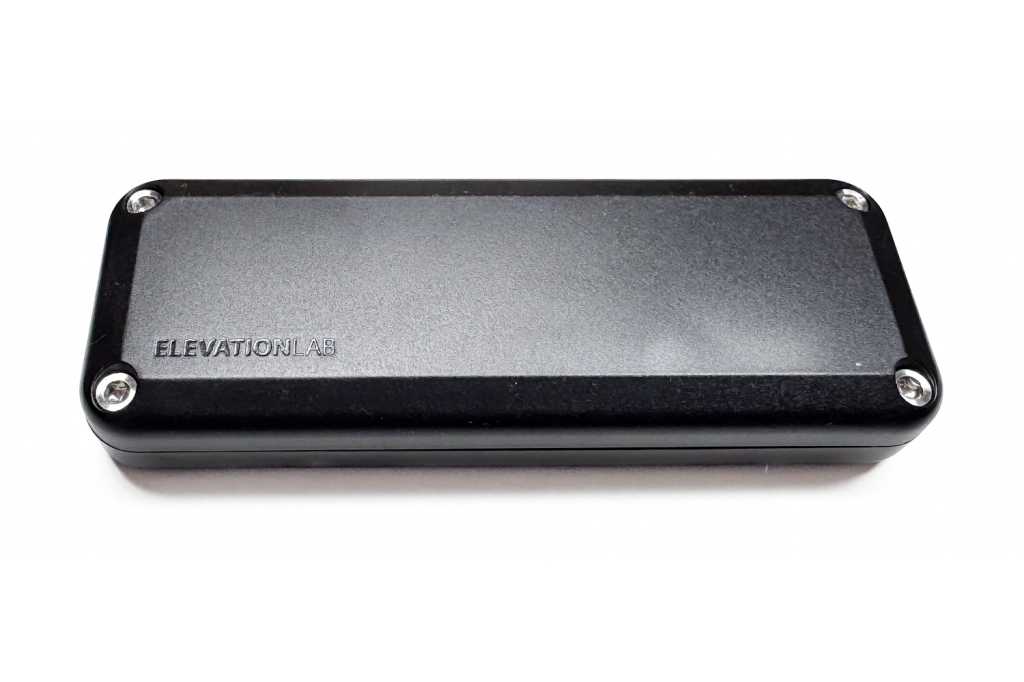
 At a glance
At a glance
Expert’s Rating
Pros
- Estimated 10-year lifespan versus 6 to 12 months for an AirTag-compatible lithium coin battery
- Waterproof against steam cleaning and high-pressure jets (IP69)
- Low cost relative to standard rugged waterproof AirTag cases
- Uses standard AA batteries
- Screws use standard hex-head style (hex wrench included)
Cons
- Larger form factor compared to AirTag
Our Verdict
The waterproof case design and use of standard AA batteries lets an AirTage in the TimeCapsule 10-Year Battery Case keep tracking stuff for extended periods.
Price When Reviewed
This value will show the geolocated pricing text for product undefined
Best Pricing Today
Price When Reviewed
$19.99 | $29.99 2-pack | $39.99 4-pack
Best Prices Today: TimeCapsule 10-Year Battery Case
$19.99
Apple’s AirTag has proved an invaluable tool in tracking down baggage lost or delayed by airlines, misplaced items you’ve left behind, or stuff stolen from you, whether a bag containing a camera or your car or bike. Its biggest failing? The CR2032 lithium coin battery required to power it lasts about 6 to 12 months. (Apple claims it can last over a year, but I and many others see a more typical shorter life using brand-name batteries.)
Some companies offer Find My network compatible items certified by Apple that have non-replaceable batteries with longer lives, like the 2-year warrantied promise of the Chipolo Card Spot (review), after which they offer a discounted replacement. Others, like Pebblebee with its Card Universal (Apple or Google network support) (review) or Knog’s Scout Bike Alarm & Finder (review) let you recharge an internal battery via external contacts or a port.
Now, there’s something new: not a new Find My device, but a new case that incorporates external batteries. With an estimated 10-year lifespan using two extended-use lithium AA batteries, the Elevation Lab TimeCapsule 10-Year Battery Case may be an inexpensive answer for certain use cases where you want to go huge periods between changing batteries.
A clever case adds external batteries
The AirTag gave rise to a huge number of cases (now numbering in the hundreds) from dozens of companies. But only one has risen to the challenge of long life. Elevation Lab, an early maker of rugged AirTag cases for bikes, pet collars, and other uses, has released the TimeCapsule 10-Year Battery Case. (Yes, it’s called a “TimeCapsule,” one word, and has nothing to do with Apple’s discontinued networked Time Machine/AirPort Base Station product, the Time Capsule.)
 The TimeCapsule 10-Year Battery Case is shown here disassembled (left, right) and put together (bottom). The AirTag (top) fits securely on top of the CR2032 battery adapter in the case.
The TimeCapsule 10-Year Battery Case is shown here disassembled (left, right) and put together (bottom). The AirTag (top) fits securely on top of the CR2032 battery adapter in the case.
This case uses a clever internal adapter to power an AirTag with two AA batteries instead of the small coin battery. The case is also highly waterproof, with an IP69 rating versus the AirTag’s native IP67 rating.
The company achieves its life-extending trick by having you remove the plastic backing of an AirTag as if to replace the coin battery. The interior of the TimeCapsule case has a metal raised area the exact dimensions of a CR2032 battery. You place the open side of the AirTag onto it, add two AA batteries, and use the included screws–apparently milled to precision instead of stamped–to firmly seal the case.
Why might you want an AirTag that lasts ten years between battery changes? Apple prompts you in the Find My app and through notifications as the battery life of an AirTag or other item starts to get low. If you ignore these notifications long enough, they disappear when the battery dies. Elevation Lab’s founder said in announcing the product that he was inspired by just this when he discovered he’d failed to replace the battery in an AirTag inside a camera bag after it was stolen, and the last location was tracked three months previously.
You might also want to place an AirTag in a location that’s difficult to reach or requires disassembly to get to, and you’d ordinarily avoid with the knowledge you would need to get to it every several months to replace the battery. That could be useful if you want to put an AirTag somewhere that a thief couldn’t remove it without substantial effort, taking minutes or even hours, but where the AirTag’s Bluetooth signal will still penetrate to reach nearby devices. An AirTag will keep broadcasting unless its battery is removed or it’s removed from the paired user’s account. If the AirTag (or third-party item) is not within Bluetooth range when removed from an account, it has to be reset by hand in addition to the account removal.
 Pick a battery that is rated for long usage.
Pick a battery that is rated for long usage.
Pick the right AA battery
On the battery front, don’t use standard alkaline batteries, which the company warns against. Alkalines won’t last long enough and can degrade in the voltage they produce or even leak battery chemicals. You may have seem this leakage before when you’ve spotted a white crust on the terminals inside a device that hasn’t had its batteries changed for a while.
ElevationLab recommends the Energizer Ultimate Lithium battery, which is highly rated in independent testing, such as this exhaustive examination at Cinema Sound. They’re about $2 to $4 each depending on the quantity purchased in a package. The Energizer batteries shouldn’t need replacement under conditions measured by ElevationLab for as long as ten years. (There’s no way for us to review that particular aspect, so check back on this review in the year 2035.)
You could use rechargeable lithium batteries, such as those from Pale Blue Earth, but they cost two to five times as much each, last for hundreds of recharges, and are better suited for heavy continuous power usage, like with a battery-powered doorbell camera
Assembling and deploying a case
You receive a TimeCapsule in disassembled form with a set of four hex screws and a small hex wrench. You can also use a standard H2.5 (2.5mm) hex bit or screwdriver in a standard tool set. Assembly takes a minute or less. Once screwed shut, the case has an IP69 rating. The IP67 rating of the AirTag makes it resistant to 30 minutes of submersion at a depth of a meter (3.3 ft). IP69 allows for prolonged immersion at up to a meter plus provides protection against jet sprays.
 The assembled TimeCapsule 10-Year Battery Case provides a high level of waterproofing.
The assembled TimeCapsule 10-Year Battery Case provides a high level of waterproofing.
The case is large compared to an AirTag due to housing two AA batteries and requisite circuitry. It measures 4.45 by 1.57 by 0.75 inches (11.3 by 4 by 1.9 cm). Make sure the place you want to use it can accommodate the bulk. The product doesn’t come with a mounting bracket, screw holes for mounting, or an adhesive. You’ll have to figure that out for locations where it can’t float, as in a bag.
The only downside I can see of this ten-year battery case is that Apple may improve its AirTag enough in the meantime that you’ll want to swap in a fresher one with newer features, or a third party will develop a longer-live, rechargeable battery with a bigger form factor. Apple could also change the size and shape of an AirTag, requiring a case redesign to use newer ones.
However, you have years to think about that while your TimeCapsule-encased AirTag keeps on pinging.
Check out Macworld’s guide to the best AirTag key rings, luggage tags, wallets & accessories.





